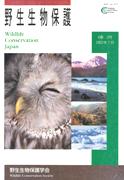Volume 6, Issue 2
Displaying 1-6 of 6 articles from this issue
- |<
- <
- 1
- >
- >|
Original Papers
-
Article type: Original Papers
2001 Volume 6 Issue 2 Pages 51-66
Published: July 31, 2001
Released on J-STAGE: October 17, 2017
Download PDF (1504K) -
Article type: Original Papers
2001 Volume 6 Issue 2 Pages 67-78
Published: July 31, 2001
Released on J-STAGE: October 17, 2017
Download PDF (932K) -
Article type: Original Papers
2001 Volume 6 Issue 2 Pages 79-90
Published: July 31, 2001
Released on J-STAGE: October 17, 2017
Download PDF (1075K) -
Article type: Original Papers
2001 Volume 6 Issue 2 Pages 91-107
Published: July 31, 2001
Released on J-STAGE: October 17, 2017
Download PDF (1313K) -
Article type: Original Papers
2001 Volume 6 Issue 2 Pages 109-117
Published: July 31, 2001
Released on J-STAGE: October 17, 2017
Download PDF (834K) -
Article type: Original Papers
2001 Volume 6 Issue 2 Pages 119-129
Published: July 31, 2001
Released on J-STAGE: October 17, 2017
Download PDF (964K)
- |<
- <
- 1
- >
- >|
